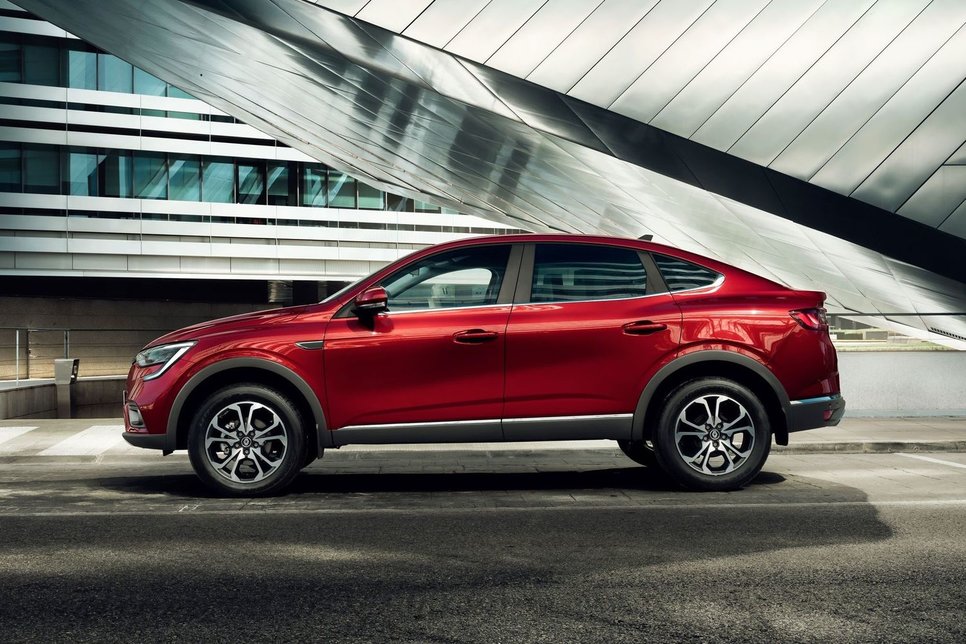Which is better: chip tuning with “mechanics” or “automatic”?
 How quickly kilometers fly! Our editorial Renault Kaptur is definitely not the kind of car that is bored. More than a third run at the wheel I spent. I managed to fall in love with him several times and hate him with all my heart. Useless chip tuning, which we described in the last blog entry, only aggravated the already contradictory feelings. “Eh, if it weren’t for this stupid machine gun,” I told myself every time during my mournful acceleration. Maybe a copy with the “mechanics” would be the best choice? We found one and tried to find out by comparing the dynamics not only “nose to nose”, but also in absolute values.
How quickly kilometers fly! Our editorial Renault Kaptur is definitely not the kind of car that is bored. More than a third run at the wheel I spent. I managed to fall in love with him several times and hate him with all my heart. Useless chip tuning, which we described in the last blog entry, only aggravated the already contradictory feelings. “Eh, if it weren’t for this stupid machine gun,” I told myself every time during my mournful acceleration. Maybe a copy with the “mechanics” would be the best choice? We found one and tried to find out by comparing the dynamics not only “nose to nose”, but also in absolute values.
On an early Saturday morning, armed with the must-haves for such Racelogic affairs, we set off on a wide and fast track near Sheremetyevo Airport. The cars were not specially prepared for the race: in my “automaton” – almost a full tank of the usual 95th, and some everyday things are hanging in the trunk. Maxim’s car, the “mechanical” Kaptur, is still on the velcro, with a tow bar and a child seat. He, like ours, is also on the “chip”, only from another supplier. In a word, it was not necessary to apply for academic accuracy of measurements. Let’s replace it with a beautiful phrase “conditions as close as possible to real life”.
But before – a cursory inspection and test drive cars with manual transmission. For a run of 47,000 km, it has all the typical sores of this model: door cards, scratching paint on the doors, intumescent chrome on the moldings and the fifth door. But we are interested in the third pedal and the lever that needs to be moved more often by the “automatic” one. The first gear is extremely short, which, coupled with the other close gears, gives a feeling of “liveliness”. When throwing a clutch car swings noticeably in the longitudinal direction. But such habits are deceptive: in numbers, this unit helps to accelerate “to a hundred” only 0.7 seconds faster (10.5 vs. 11.2 for the automatic version), accelerating the crossover to the same maximum speed. As for fuel economy, the average consumption of a gain is no more than one liter per 100 kilometers. Another “trick” of the version with “mechanics” is the color indicator on the dashboard that helps you understand how eco you are at the moment, changing the color from red to green. In the multimedia settings, the issue of fuel economy is devoted to a whole section where you can grow your own eco-tree. The smoother you drive, the better it grows. It’s funny to see such a decision by car, the average urban consumption of which hardly fits into 12 liters per 100 kilometers.
The report on the measurements will start with single races, during which we tried to get as close as possible to the passport numbers. To be more precise – keep up with them for the minimum amount of time. The best result of overclocking a car with an “automatic” is 11.6 seconds to a hundred, the average is 12 seconds. In the 2WD mode and Lock 4WD – a little longer, in the start mode with two pedals – a little faster, but within the framework of the error.
Another thing – the “mechanics”, on the ability to handle that time depends to the maximum extent. Throwing a clutch at the start inevitably disrupts the front wheels in a half-second slip, until finally the clutch connects the rear axle. The best result is 0–100 km / h – 10.8 seconds. This is sad, but understandable. Factory measurements suggest ideal conditions, 98th gasoline in the tank and much more experienced pilots than we do. “Pseudochip”, as it became clear, does not allow to count on even the slightest improvement in the dynamics of acceleration.
And how are the numbers implemented in practice? We decided to hold a classic amateurish drag race, starting from the spot on the third horn signal. I managed to do it on an “automatic” machine only from the third attempt, when starting from two pedals. Carrying the right leg from the brake to gas is too long, and it is for this period that the start is delayed. With the same two pedals, it was possible to achieve a synchronous start. However, it didn’t help much to our car, and the green crossover rushes forward onto the body almost immediately due to the short first gear. The gap at the finish line is from two to five buildings, but, in truth, we did not measure the time of passing a quarter mile due to the absence of conditions.
What is the result of this reckless action? Prove the obvious: Kaptur on the “mechanics” goes faster – and just as much as the manufacturer claims. And also to confirm the measurements of the stand after the chip-tuning, which proved the futility of this idea. And in real conditions, these crossovers are not able to give factory acceleration rates. Your humble myth destroyers, Drom.ru.
However, these are not all the myths that were to be destroyed. About a month before the next MOT (already the tenth in a row!) One of the official dealers called me, who we hadn’t previously serviced and offered to undergo maintenance for … 4700 rubles! I immediately suspected a trick – well, one dealer cannot give a price THAT cheaper by another by a third (the base cost of maintenance from all dealers to our Kaptur is about 7,000 rubles). Signing up to check. The day before the visit I call to clarify the relevance of the price – everything is valid.


